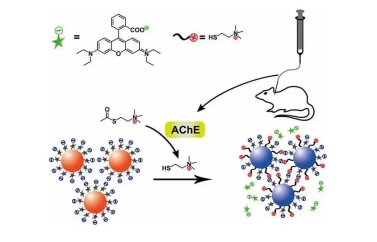Seebio® Butyrylthiocholine iodide - Cholinesterase Assay Substrate
Time:2023-12-29 Hits:239
Butyrylthiocholine iodide is a commonly used biochemical reagent, mainly used for the determination of pseudocholinesterase in plasma.
For more product details, please contact us: service@seebio.cn or Phone: +86 21 58183719 or Wechat: +86 158 0195 7578
Butyrylthiocholine iodide Basic Properties
English name: S-Butyrylthiocholine iodide
Alias: S-butyrylthiocholine iodide; butyrylthiocholine
CAS:1866-16-6
Molecular formula: C9H20INOS
Molecular weight: 317.23
Structural formula:

Butyrylthiocholine iodide is used as substrate, for the continuous monitoring method to determine cholinesterase activity in plasma.
Butyrylthiocholine Iodide Detection Principle
pseudocholinesterase (PChE) is found in serum and plasma and is produced by the liver Synthesized, can act on acetylcholine and other choline compounds. S -Butyrylthiocholine iodide, has been used as a substrate for determination of butyrylcholinesterase (BChE) or plasma cholinesterase activity.
Detection principle: cholinesterase (cholinesterase, ChE) catalyzes butyryl thiocholine Alkaline hydrolysis produces butyrate and thiocholine. Thiocholine reacts with colorless 5,5-dithiobis(2-nitrobenzoic acid) (DTNB), Yellow 5-mercapto-2-nitrobenzoic acid (5-MNBA) is formed. Measure the absorbance change rate at 410nm and calculate pseudocholinesterase (PChE) LiveSex.

Reference value:Adult 4250-12250M/ml (37℃)
Butyrylthiocholine iodide Product
|
Item number
|
Product name
|
Packaging specifications
|
|
ECE0105E
|
Butyrylthiocholine iodide, 98.0%
|
10g, 25g, 100g
|
Specifications
|
purity
|
≥98.0%
|
|
Solubility
|
Clarification (0.1M aqueous solution)
|
|
pH
|
4.0~6.0(5% aqueous solution)
|
|
Exterior
|
White crystalline powder
|
References:
[1] Comparison of a commercially available assay system with two reference methods for the determination of plasma cholinesterase variants. M Whittaker, J J Britten , P J Dawson, Clinical Chemistry, Volume 29, Issue 10, 1 October 1983, Pages 1746–1751
[2] Activity and polymorphisms of butyrylcholinesterase in a Polish population. Jasiecki J,et al.,Chemico-Biological Interactions, 259, 70-77 (2016)
[3] Tris-(2,3-Dibromopropyl) Isocyanurate, a New Emerging Pollutant, Impairs Cognition and Provokes Depression-Like Behaviors in Adult Rats.< a i=2> Liang Ye,et al.,PLoS One. 10(10), 1-16 ( 2015)
[4] New amide alkaloids from Delphinium brunonianum.Yuan-Sheng Zou et al.Fitoterapia , 136, 104186-104186 (2019-06-01)
[5] Esterase Inhibition and Copper Release from Copper Iodide Dental Adhesives - An In Vitro Study. Gabriela Fernandes et al. 22(3), 265-274 (2020-05-22), The journal of adhesive dentistry
